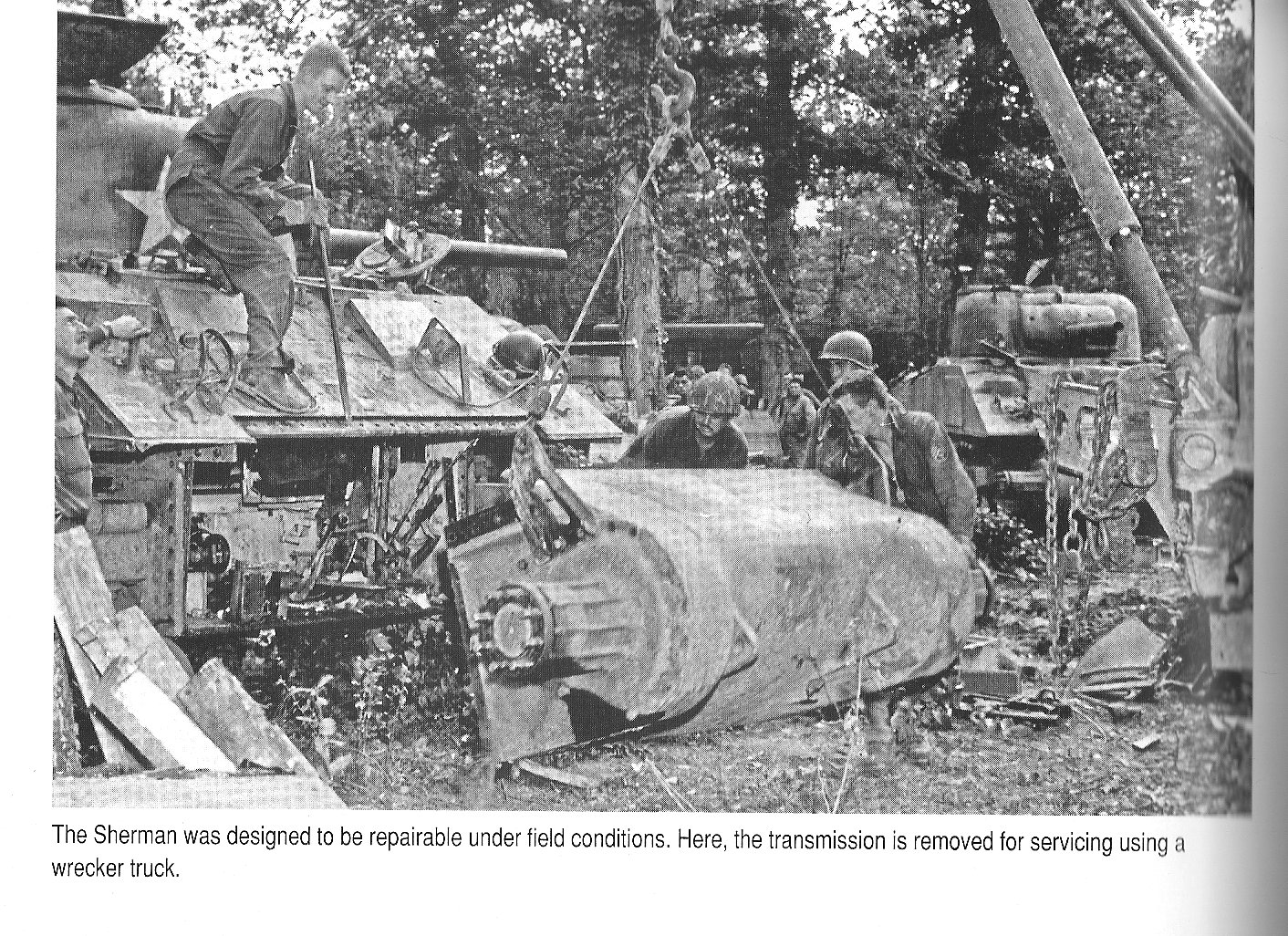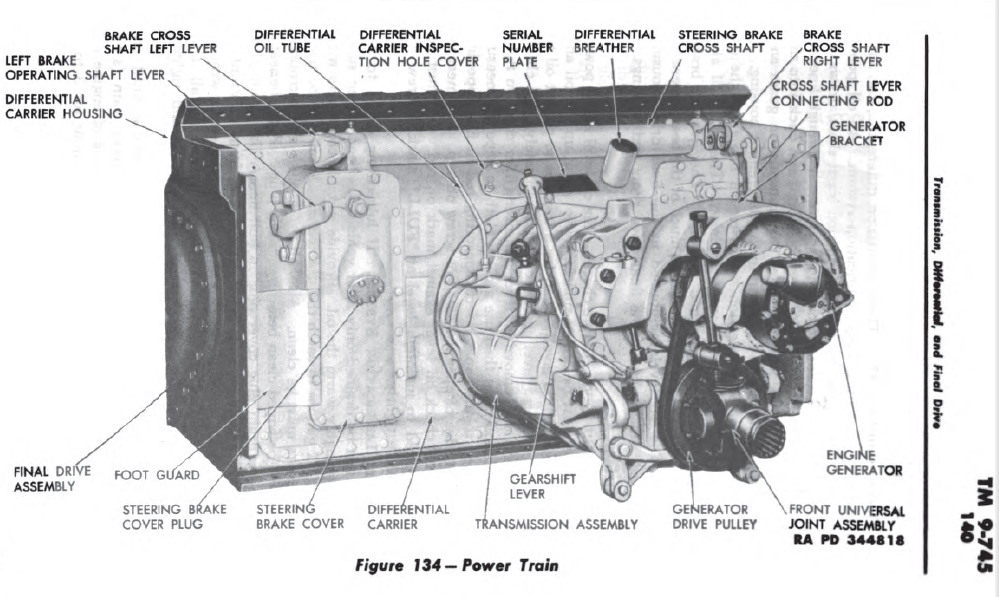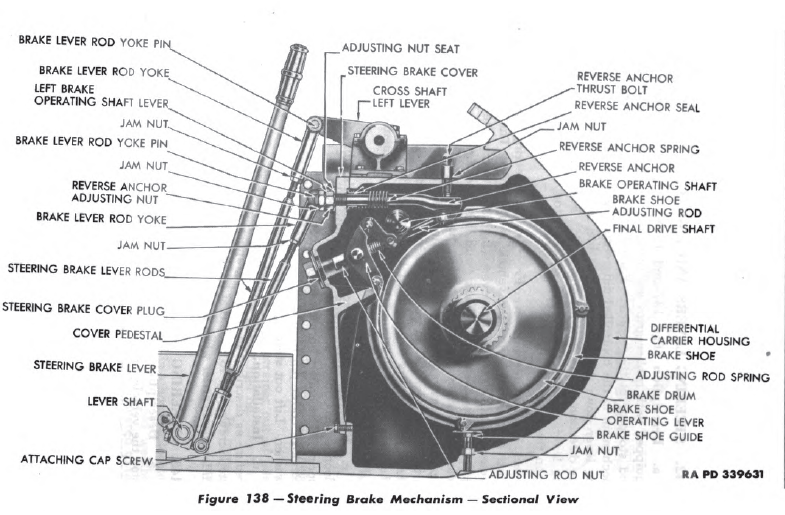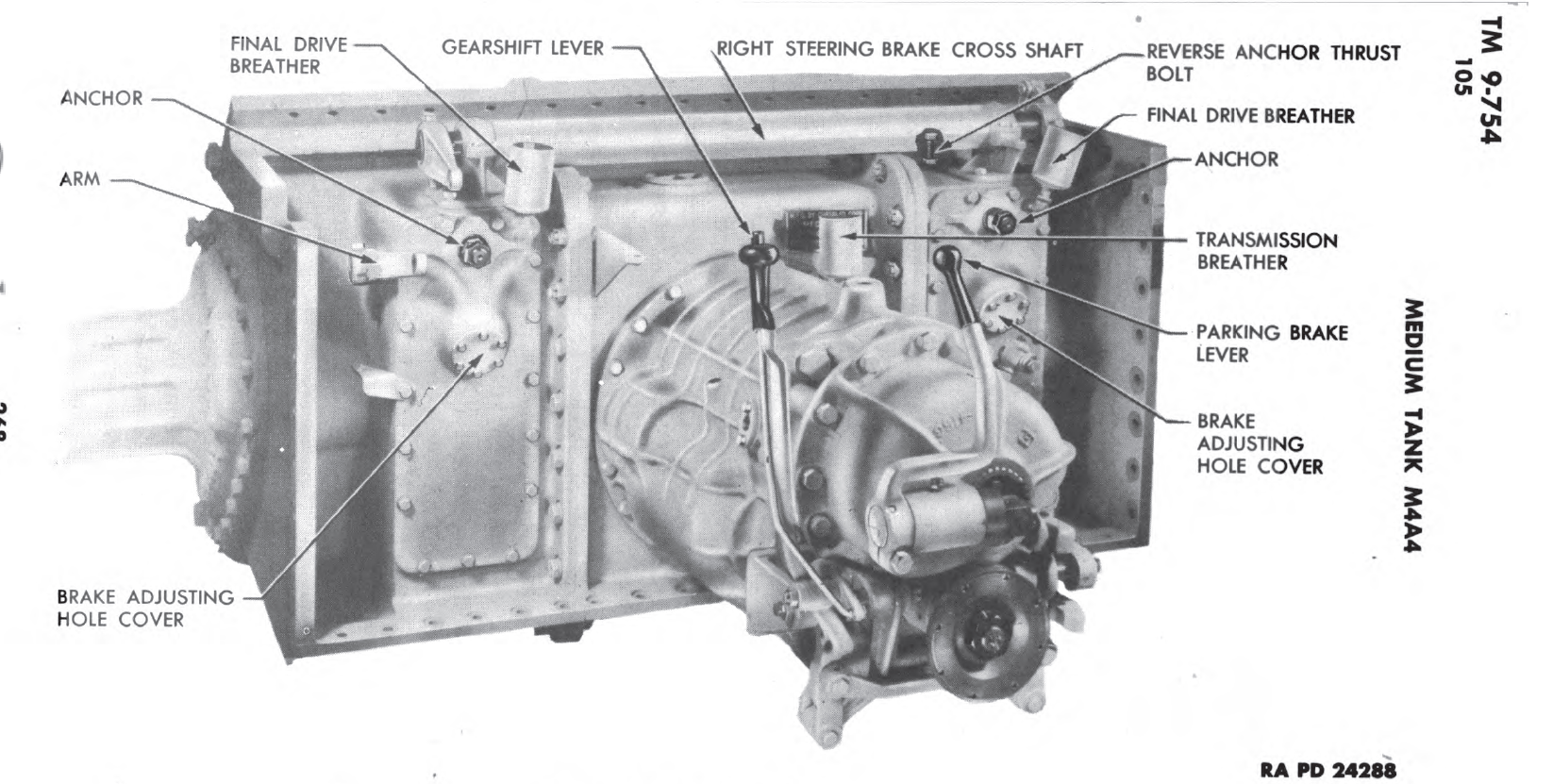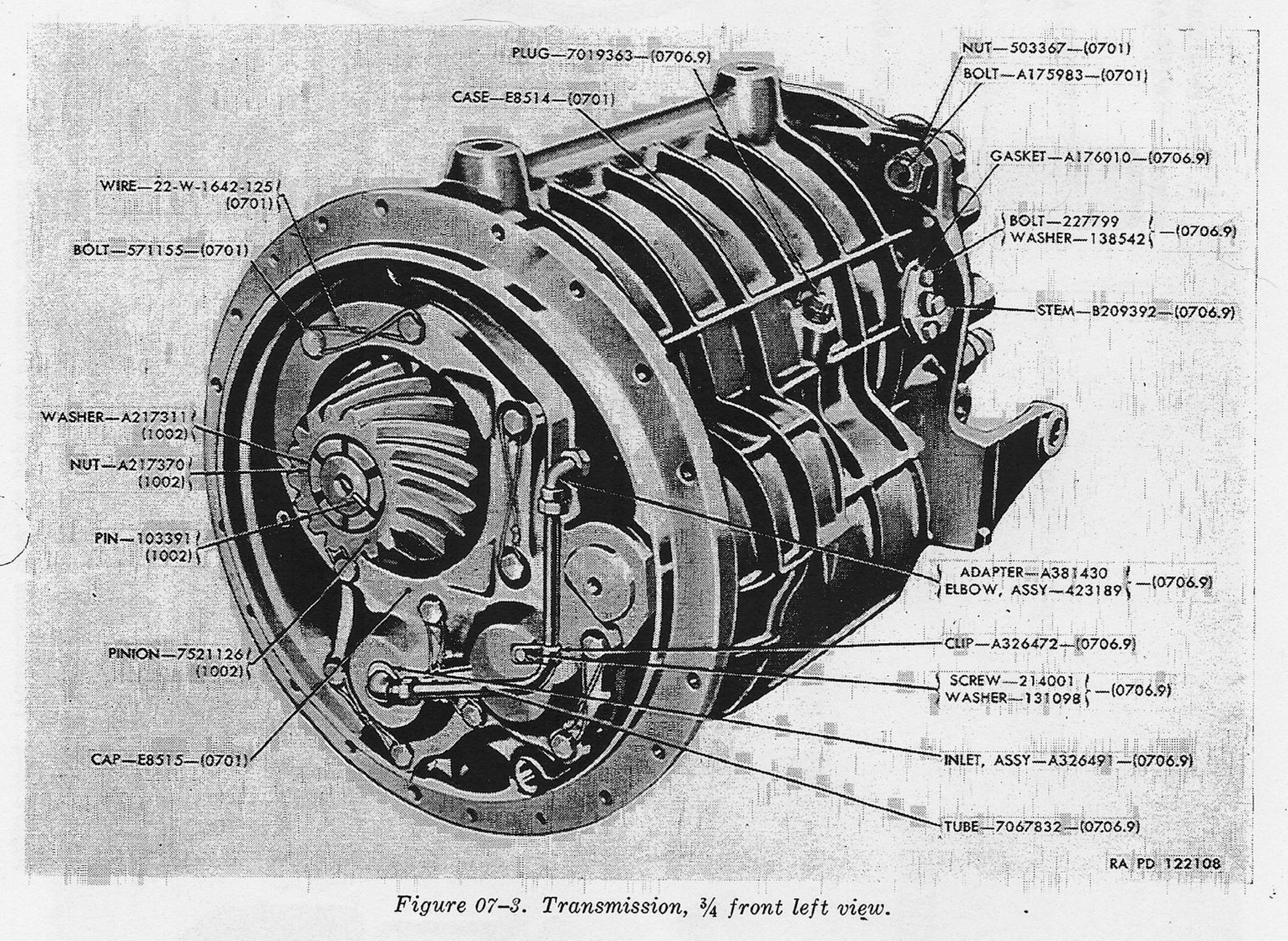 The Transmission, Differential, and Final Drives: Called The ‘Powertrain’ The Sherman’s Was Very Well Designed.
The Transmission, Differential, and Final Drives: Called The ‘Powertrain’ The Sherman’s Was Very Well Designed.
The Transmission, differential and final drives on the Sherman were very robust from the start of the Sherman design and proved to be rugged enough to take all the upgrades the Sherman had thrown at it over the years. As a combined unit, along with the steering brakes, with the armored differential housing they were referred to as the ‘powertrain’. In most cases a whole powertrain unit would be swapped if any of the major components needed serious work, since it was relatively easy. There were three types of armored covers, a three piece bolt together type, and two cast types. Powertrain units incorporating any of the differential covers could be swapped into any Sherman in place of any other type of powertrain unit. The internals of the three types of differential covers where different though and parts in some cases do not interchange. Hydraulically powered steering was tried on very early M3 Lee tanks, but it was discarded for an all mechanical long lever system used throughout the Lee and Sherman run.
The final drives and differential had a gear ratio of 2.84:1, limiting the tanks top speed by RPM to 26 miles an hour in the M4A3 version of the tank, and that for only short burst. The RPM limit varied with engine model, and in the Jumbos case, a slightly higher gear ratio of 3.36:1, limiting its top speed to 22 miles an hour but giving the drivetrain a little more mechanical grunt to get the extra weight moving. This was the only modification major enough to be mentioned in any publication I’ve read so far. That says ‘damn good design’ to me. I’ve read several accounts of Sherman restorations being done, where after years on a firing range, or just rotting in a field somewhere, the final drives and differential units needed no mechanical restoration.
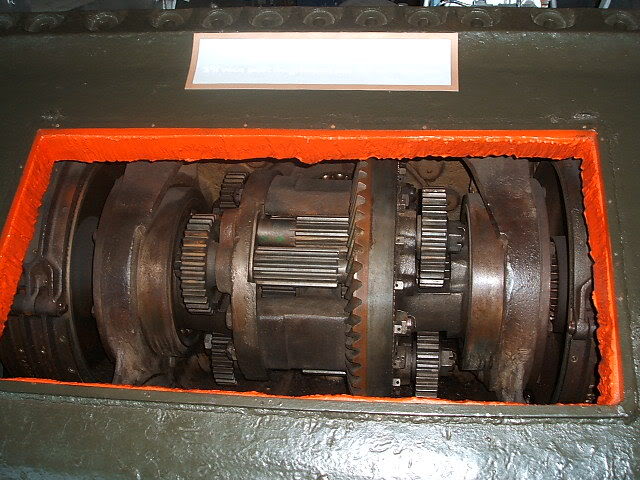
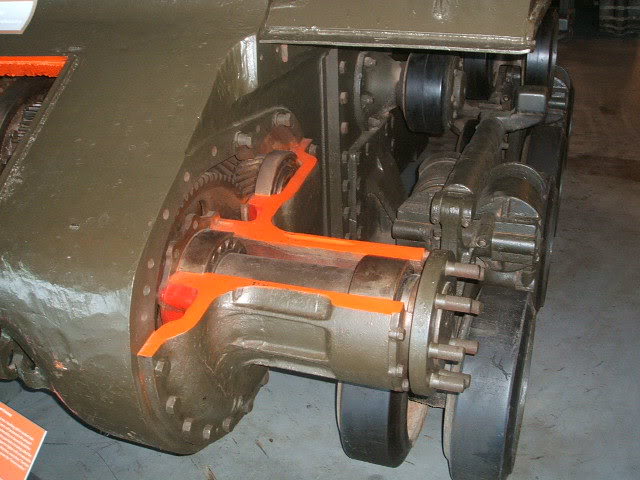
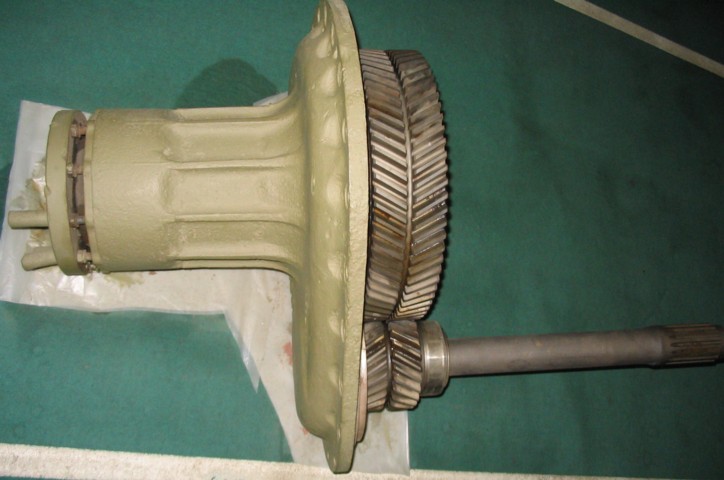
Now a bit about gear ratios, for those who are not gearheads, before we get into the transmission since it’s going to have even more confusing gear ratios talked about. The meaning of the gear ratios in the above paragraph is, for every rotation of the drive shaft coming out of the transmission and going into the final drives and differential has to spin 2.84 times to spin the sprocket output shafts one turn. What determines the Transmissions output rpm is what gear it is in, and what ratio that gear is. The higher the number, the more mechanical advantage is transferred to the final drives, but lowers the top tanks tops speed in that gear. If you have driven a manual transmission car, this is why first gear climbs in RPM so fast and each further gear the RPM climbs slower, but the car goes faster, same for the Sherman tank. If you really understand this, you will always get a laugh at the Hollywood portrayal of nitrous oxide; something used in WWII aircraft engines because they always show it as making the cars top speed faster, when all it can do is improve the acceleration to the mechanically limited top speed.

The Sherman transmission has a “Granny” first gear ratio of 7.56:1, the tank isn’t going to be moving faster than 1 or 2 miles per hour before the driver would have to shift. The next gear up, second is 3.11:1, on level ground, gear two is used to start the tank and drive it at low speeds. Say up to 5 miles an hour, on road and rarely off road third rarely you would then get into third gear, 1.78:1, and up to 8 to 10 mph. Fourth would be the last gear to see regular use, coming in at an almost one to one, 1.11:1. This is your driving like a bat out of hell 13 to 19 miles an hour gear. Fifth gear is actually an overdrive gear, at 0.73:1, meaning .73 of a turn to spin the tranny output once. Meaning, this has to be taken to into account in calculating the tanks top speed and it could only reach its top speed on good roads in fifth gear! Reverse gear, 5.65:1, was almost as tall as first and really limited the tanks reverse speed. If you understand what be just covered, you can understand the gear ratios listed on your next cars window sticker. On our example, M4A3 at would be screaming along at 2800 rpm, at the tanks 26 mph top speed.
Now that you understand gear ratios you may wonder what the term “Granny” gear means. The ‘Granny’ gear refers to a really high gear ratio gear, almost always first. The Granny gear was used for getting a vehicle started while hauling a big load, trying to tow another tank to get it started or heavy vehicle for the same reason, climbing a steep hill or obstacle, driving through thick mud or deep water or getting another tank or heavy vehicle unstuck from mud or another obstacle. This gear could also be used to slow the tank when going down a steep hill.
The Sherman Transmission was fully Synchromesh in gears 2 through 5 with first and reverse not needing it. Synchromesh means you did not have to depress the clutch twice, once to get it into neutral, the next to go to the next gear, or “double clutching”. This, in theory, made the Sherman tank, though a manual transmission that used a clutch, much like any car that has a manual, relatively easy to drive. If you could drive a car from the 30s you could drive a Sherman. There are several Sherman museums that will let you drive one if you have the right amount of money. From what I understand, the key to how easy the Sherman is to drive comes partly from the motor in it and partly from how much you’re really willing to drive the thing and not worry about breaking it. It’s an American tank people, you can abuse it, it can take it, it’s not a Panther, it was designed with the American young adult of the 40s in mind. Hell, these things were used to tear down buildings post-war! They are not delicate. Anyway, back to what I’ve read about driving a Sherman. The easiest motors are supposed to be the Diesel and Ford GAA, then A57 if it’s running right, then the R975 powered tanks. The R975 because it likes to get up into its higher RPM power band, and stay there for a while, it helps burn off carbon and keeps the plugs un-fowled, is supposed to be the hardest to drive. In contrast, the few places that have running Panther tanks have to be extremely careful who they let drive it since using some of its design features could destroy the transmission or final drives.
The Sherman powertrain was a very tough unit. I know of at least two restorations where the transmission needed little mechanical work. This same transmission, and for the life of me I don’t think I’ve ever seen a name for the original designer/maker, stayed largely unchanged through the full life of the tank. The Israeli Shermans used into the 70s were using original Sherman Transmissions, though probably overhauled. That they could be, and continue to be on overhauled for restored Shermans, kept working, and working well after all those years also screams “DAMN GOOD DESIGN” and it’s a little sad I don’t, we don’t know, who made them or designed them.


